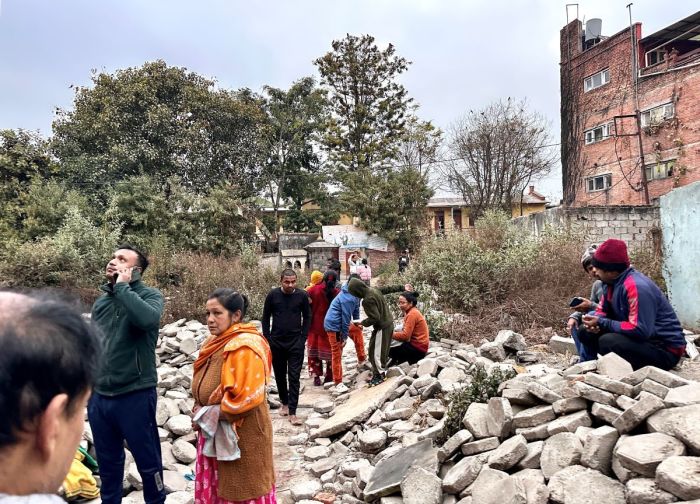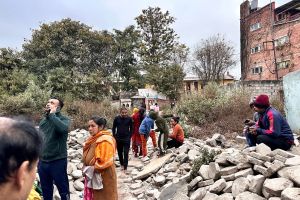Massive earthquake strikes sacred Buddhist city, kills over 120

Rescuers searched through damaged villages and streets littered with rubble for survivors after an earthquake struck one of Tibet's holiest cities, toppling houses and killing over 100 people, with aftershocks felt across the neighboring regions.
The earthquake occurred in Dingri County, Shigatse City, in China's Tibet region, on Tuesday around 9:05 a.m. Beijing Time, according to Chinese state media. Shigatse is regarded as the seat of the Panchen Lama, a spiritual leader and the second-highest authority in Tibetan Buddhism after the Dalai Lama.
In a statement, the Dalai Lama, who lives in self-imposed exile in India, said that he was "saddened" to learn about the earthquake and expressed compassion for people impacted by the tragedy.
"It has caused the tragic loss of many lives, numerous injuries, and extensive destruction to homes and property," he said. "I offer my prayers for those who have lost their lives and extend my wishes for a swift recovery to all who have been injured."
Footage shared by China Xinhua News on Facebook showed several rescuers walking by destroyed structures. According to CNN, earthquake tremors were felt as far as Kathmandu, Nepal's capital.
At the time of the latest report, the earthquake is believed to have killed at least 126 people and injured 188 others.
The quake also damaged 3,600 houses, according to China Central Television.
The China Earthquake Center recorded some 150 aftershocks by Tuesday evening, and several had a magnitude over 3.0, CNN reported. Bishal Nath Upreti from the Nepal Centre for Disaster Management said in a statement that the tremors from the earthquake had been "very strong."
"People came running out of their houses. You could see the wires from poles shaken loose," Upreti said.
Around 6,900 people lived within 12 miles of the epicenter, according to Xinhua News Agency. The epicenter is the part of the earth's surface directly above the point where an earthquake originates.
While Chinese officials initially reported that the earthquake in the Tibet region had a magnitude of 6.8, the U.S. Geological Survey placed the earthquake's magnitude at 7.1.
According to the USGS summary, the earthquake near Xizang, China, occurred due to "normal faulting at shallow depth north of the boundary between the Eurasia and Indian plates."
"Focal mechanism solutions indicate that rupture occurred on a roughly north-south striking fault, dipping moderately to either to the east or to the west," the summary explained.
"Continental collision between the India and Eurasia plates drives uplift of the Himalayan Mountains," the USGS clarified. "Focal mechanism solutions of this earthquake indicate this event was associated with a normal fault oriented roughly perpendicular to the plate boundary north of the Himalayan Mountains within the Eurasian plate."
As the agency noted, the region near the India and Eurasia plate boundary is no stranger to earthquakes, having experienced 10 earthquakes with a magnitude of 6 or greater near the site of the most recent one within the last century.
"This includes the 2015 M7.3 Nepal earthquake, located about 160 km to the southwest and the 1934 M8.0 earthquake, located about 160 to the south-southwest," the USGS reported. "The 2015 M7.3 Nepal earthquake was an aftershock of the April 25, 2015 M7.8 Nepal earthquake. This sequence of 2015 events resulted in 8,669 fatalities and widespread damage."
Due to the recent earthquake, the Mount Everest scenic area was closed, The Associated Press reported. A CCTV report stated that over 3,000 rescuers had been deployed. Chinese leader Xi Jinping has called for minimizing casualties and resettling those who have lost homes.
Samantha Kamman is a reporter for The Christian Post. She can be reached at: samantha.kamman@christianpost.com. Follow her on Twitter: @Samantha_Kamman





























